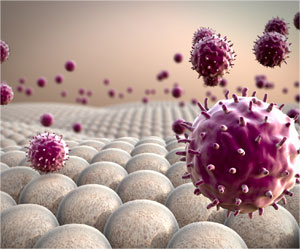
Freedom from catching what’s “going around” is more than simply avoiding germs. It takes a balanced and robust immune system. Redox signaling molecules provide the resources to prep our systems for what may come.
Smart Cells–No organ system in the body is more intimately connected to the brain than the immune system. Because white blood cells actually contain the same neuropeptides that are found in brain cells, they “think” like brain cells, a fact that has initiated a whole field of study, psychoneuroimmunology.
The messenger molecules used by the immune system to transmit messages are redox molecules that relay messages hundreds of millions of times a second throughout the body. This information us used by cells to defend, survey, and redirect our various immune cells as they interpret information all the way from foreign invaders, sickened cells, or cancer cells.
Inflammation–We’re trained that inflammation is a bad thing, but inflammation is necessary for healing but when completed it must shut down. The immune system relies on it as it defends us form dangerous organisms.
When antigens are detected, redox molecules trigger a cascade of chemical reactions that lead to an inflammatory response—the initial part of the healing process. No molecules, no inflammation, and thus no ability to signal the activation of our modulating genes. This critical step leads to the release of proteins and other immune mediators, and bringing the attack into full activity.
Just as redox signals have an important role in strategically directing an attack, it is the redox signals that allow for the down regulation of the attack and eventual clean up—what we call the healing process.
This is all directed by the genius of our redox-driven biochemistry. We take this for granted until we lose this equipment to disease or chemical toxicity.
Immune Signals–Every invader requires a specific immune response. For example, allergens provoke very different redox reactions than viruses do, so it takes very specific signals that must be clearly read in order to create the proper response. Missed signals could prove life threatening. Thankfully our systems have back up plans and ways to adapt our chemistry if front lines fail to do proper surveillance.
The circulating sentinels we call white blood cells have various names and individual functions. They share in common the need for continuous surveillance and monitoring abilities to help us maintain balance. The first line of alerting this wondrous system is a simple redox molecule that can provoke a major or minor influx of inflammation according to the job at hand.
Immune Response–Adaptogenic genes turn on and off to drive our immune responses and help us adjust our biology to the changing environment—and they are redox sensitive. RSM also activate antioxidants, which help to correct oxidative stress associated with inflammation. Maintaining healthy cells serves to create these tiny powerhouse molecules and lead to a balanced and appropriate immune responses.
